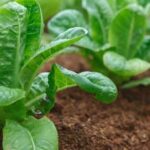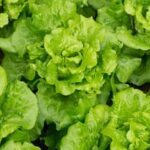Are you looking for a new hobby that allows you to reconnect with nature and enjoy the fruits of your labor? Look no further than gardening vegetables. In recent years, there has been an increasing trend of people getting into this rewarding pastime, and for good reason.
Not only does it provide countless benefits for your physical and mental wellbeing, but it also allows you to grow flavorful and nutritious produce right in your own backyard. Whether you’re a novice or an experienced gardener, diving into the world of vegetable gardening is sure to bring immense joy and satisfaction.
The benefits and rewards of growing your own vegetables go beyond just having fresh, organic produce at your fingertips. Gardening vegetables can be a therapeutic activity that helps reduce stress levels and improves overall mental health.
The act of caring for plants, watching them flourish under your guidance, provides a sense of accomplishment and pride like no other. Additionally, tending to a vegetable garden allows you to connect with nature on a deeper level, fostering a greater appreciation for the environment.
When it comes to choosing the perfect vegetables for your garden, it’s important to consider both your level of experience and the specific requirements of each plant. Some vegetables are beginner-friendly, such as tomatoes, salad greens, and herbs like basil or parsley. These varieties are relatively easy to grow and require minimal maintenance.
On the other hand, vegetables like peppers, cucumbers, or root crops might demand more attention and expertise. It’s essential to find the right balance between challenging yourself with new plantings while ensuring successful growth.
So whether you have a spacious backyard or just a small urban balcony at your disposal, gardening vegetables is an accessible hobby for everyone willing to give it a try. With numerous benefits ranging from physical health improvements to sustainable living practices, growing your own food is not only fulfilling but also empowering. Get ready to embark on this exciting journey as we guide you through the essentials of vegetable gardening, from preparation and cultivation to harvest and enjoyment.
Choosing the Perfect Vegetables for Your Garden
When it comes to gardening vegetables, one of the most exciting parts is deciding which crops to grow. Whether you have limited space or are a complete beginner, there are a wide variety of vegetables to choose from that can thrive in different climates and garden sizes.
Beginner-Friendly Vegetables
For those new to vegetable gardening, it’s important to start with plants that are relatively easy to grow. Some popular beginner-friendly options include tomatoes, lettuce, radishes, and herbs like basil and mint. These vegetables tend to be low-maintenance and forgiving, making them ideal for inexperienced gardeners.
Another consideration for beginners is the length of time it takes for vegetables to mature. For quicker results, opt for fast-growing crops such as salad greens, baby carrots, and beans. These vegetables provide the satisfaction of harvest within a few weeks or months.
Variety for Experienced Gardeners
Experienced gardeners may want to experiment with a wider range of vegetables that require more attention and care. This could include crops like peppers, eggplants, pumpkins, and melons. These plants often have specific soil requirements or need special techniques like pruning or trellising.
Additionally, experienced gardeners may enjoy growing heirloom varieties or rare plants not commonly found in grocery stores. This allows for a unique and diverse vegetable garden that showcases different shapes, colors, and flavors.
Considering Climate and Space
When choosing vegetables for your garden, it’s crucial to consider your local climate and the amount of space you have available. Certain plants thrive in cooler climates while others prefer warmer temperatures. Take into account the average frost dates in your region and choose vegetables accordingly.
If you have limited space, container gardening or vertical gardening techniques can allow you to maximize yield while conserving space. Vegetables like lettuce or herbs can be grown in small pots or hanging baskets, while vining crops like cucumbers or peas can be trained to grow vertically on trellises.
By selecting the right vegetables based on your experience, climate, and available space, you can set yourself up for a successful and rewarding vegetable gardening experience.
Preparing Your Garden for Planting Vegetables
When it comes to gardening vegetables, the preparation of your garden plays a crucial role in the success of your plants. Prepping the soil and creating optimal conditions for growth ensures that your vegetables will thrive and yield a bountiful harvest. In this section, we will delve into the various aspects of preparing your garden for planting vegetables, including soil testing, clearing, tilling, and amending the soil.
The Importance of Soil Preparation
Before you begin planting your vegetable garden, it is essential to understand the importance of soil preparation. Healthy soil provides the necessary nutrients and structure required for plants to grow strong and healthy. By taking the time to prepare your soil properly, you are setting a solid foundation for successful vegetable gardening.
One crucial step in preparing your garden is conducting a soil test. A soil test provides valuable information about pH levels, nutrient deficiencies or excesses, and organic matter content. Based on these results, you can make informed decisions about what amendments are necessary to optimize your soil’s composition.
Clearing, Tilling, and Amending the Soil
Once you have determined what adjustments need to be made to your soil based on the soil test results, it’s time to clear any debris or weeds from the area where you plan to plant your vegetables. Removing these obstacles allows for better air circulation and reduces competition for nutrients.
Next, till the soil thoroughly using a tiller or a garden fork. This helps break up compacted soil and loosen it for easier root penetration. Be mindful not to over-till as this can disrupt beneficial organisms within the soil.
After tilling, amend the soil by adding organic matter such as compost or well-rotted manure. Organic matter improves drainage in clay soils while enhancing water retention in sandy soils. It also feeds beneficial microorganisms in the soil that contribute to plant health.
By following these steps and taking the time to prepare your soil correctly, you are setting the stage for a thriving vegetable garden. Your efforts in soil preparation will pay off as you witness healthy and productive plants throughout the growing season.
Starting from Seeds or Seedlings
When it comes to starting your vegetable garden, one of the first decisions you’ll need to make is whether to start from seeds or purchase seedlings. Both options have their advantages and it ultimately depends on your preferences, experience level, and time commitment.
Starting from Seeds:
- Cost-effective: Starting your vegetables from seeds tends to be more budget-friendly compared to buying seedlings.
- Wide variety: When you start from seeds, you have access to an extensive selection of different vegetable varieties, including heirloom and rare varieties that may not be available as seedlings.
- Educational experience: Growing vegetables from seeds allows you to witness every stage of the plant’s growth, providing a valuable learning opportunity for both adults and children.
- Better control: By starting with seeds, you have complete control over the growing conditions right from the beginning, ensuring that the plants are healthy and free from any potential diseases.
Using Seedlings:
- Time-saving: Seedlings are already a few weeks old when you purchase them, which means you can enjoy freshly-harvested vegetables sooner without waiting for the seeds to germinate and grow into young plants.
- Convenience: For those who have limited time or space, purchasing seedlings can be more convenient as they eliminate the need for indoor seed-starting setups and daily care in the early stages.
- Guarantee of success: Buying healthy seedlings gives you a head start and assures that your garden will produce a good yield without worrying about failed germination or slow growth.
- Extended growing season: If you live in an area with a short growing season, using seedlings that have been started indoors can help extend your harvest window.
Ultimately, the decision between starting from seeds or using seedlings depends on factors such as cost, availability, time commitment, personal preference, and the specific vegetables you want to grow. Some gardeners may choose to do a combination of both methods depending on their needs and circumstances. Whichever option you choose, remember to provide proper care and attention to your plants to ensure a successful vegetable garden.
Essential Tools and Equipment for Vegetable Gardening
Vegetable gardening is a rewarding hobby that allows individuals to enjoy the fruits of their labor by growing their own vegetables. To ensure success in this endeavor, it is important to have the right tools and equipment for vegetable gardening. With the proper tools, tasks such as soil preparation, planting, watering, and maintenance become much easier and more efficient. Here is a list of essential tools and equipment every aspiring vegetable gardener should have:
- Garden Spade or Shovel: A sturdy garden spade or shovel is essential for digging up soil, creating planting holes, and turning compost.
- Garden Fork: A garden fork is useful for loosening compacted soil, aerating the ground, and incorporating organic matter.
- Hand Trowel: A hand trowel is a small handheld tool with a pointed blade that is perfect for transplanting seedlings and scooping soil.
- Garden Rake: A garden rake helps to level the soil surface before planting seeds or seedlings. It also aids in removing debris and breaking up clumps of soil.
- Watering Can or Hose: Proper watering is crucial for the health and growth of vegetable plants. Having a watering can or hose with a sprinkler attachment ensures that plants receive an adequate amount of water without drowning them.
- Pruning Shears: Pruning shears are necessary for trimming excess foliage from plants, removing dead or diseased plant parts, and harvesting vegetables with stems or branches.
- Garden Gloves: Wearing gloves protects your hands from blisters, cuts, thorns, and harmful substances like pesticides or fertilizers.
- Wheelbarrow or Garden Cart: These handy tools are used to transport heavy items such as bags of soil amendments, compost materials, or harvested produce around the garden.
Apart from the basic tools listed above, there are additional helpful gardening accessories worth considering:
- Plant Supports: Stakes or cages are used to support tall plants such as tomatoes, cucumbers, or beans.
- Garden Twine: This is useful for tying up plants that need support or securing structures like trellises or fencing.
- Gardening Gloves: These protect your hands from thorns, dirt, and bug bites.
- Knee Pads: Wearing knee pads provides cushioning and protects your knees when kneeling on the ground for extended periods while tending to the garden.
Remember, investing in high-quality tools can save you time and effort in the long run. However, if you are on a budget, there are often more economical alternatives available. Additionally, innovative gardening gadgets such as drip irrigation systems or soil moisture meters can help automate certain tasks and provide valuable insights into plant care. By having the right tools and equipment, you can create a productive vegetable garden that yields a bountiful harvest.
Nurturing and Maintaining Your Vegetable Garden
Once you have planted your vegetable garden, it’s important to nurture and maintain it to ensure a bountiful harvest. Nurturing your garden involves regular care and attention to the needs of your plants. This section will discuss essential tasks such as watering, mulching, weeding, fertilizing, and pest management.
One of the most important aspects of nurturing your vegetable garden is providing adequate water for your plants. Vegetables generally require consistent moisture for optimal growth. Depending on your climate and rainfall patterns, you may need to supplement rainfall with regular watering. It is essential to water deeply, allowing the water to reach the roots rather than just wetting the surface. Watering in the morning or evening is best to prevent evaporation during peak heat hours.
Mulching is another key practice in maintaining a healthy vegetable garden. Mulch helps conserve soil moisture by reducing evaporation and suppressing weed growth. It also acts as an insulator, moderating soil temperature fluctuations. Organic mulches such as straw or leaves can be laid around plants to a depth of 2-4 inches.
Weeding is an ongoing task in any garden but is particularly crucial in a vegetable garden where weeds can compete with vegetables for nutrients, water, and sunlight. Regularly inspect your garden for weeds and promptly remove them by hand or using appropriate tools depending on their size and root structure. Remember to be gentle around your vegetables while weeding to avoid damaging their roots.
Fertilizing is vital for maintaining healthy plant growth and ensuring good yields in a vegetable garden. Before planting, incorporate organic matter such as compost or well-rotted manure into the soil for added nutrients. Additionally, during the growing season, consider using organic fertilizers specifically formulated for vegetables following package instructions.
Lastly, managing pests and diseases is crucial for a successful vegetable garden. Regularly inspect your plants for signs of pests like aphids, caterpillars, or snails. There are various organic pest control methods available such as hand-picking pests, using insecticidal soap or neem oil sprays, and encouraging beneficial insects. Similarly, stay vigilant for signs of diseases such as powdery mildew or blight. If detected early, some diseases can be managed with fungicides labeled for vegetable use.
By nurturing and maintaining your vegetable garden properly, you will give your plants the best chance to thrive and provide you with a rewarding harvest. Regular care and attention to watering, mulching, weeding, fertilizing, and pest management will help ensure that your vegetables grow healthy and delicious.
Stay tuned for the next section: Harvesting and Enjoying the Fruits of Your Labor.
Harvesting and Enjoying the Fruits of Your Labor
Once you have dedicated time and effort to nurturing your vegetable garden, it is time to reap the rewards. There is a unique sense of satisfaction that comes from harvesting fresh vegetables from your own backyard. Not only do homegrown vegetables taste better, but they are also more nutritious, as they are picked at their peak ripeness.
When it comes to harvesting your vegetables, timing is crucial. It is important to pick them when they are mature but still tender. Each type of vegetable has its own indicators for when it is ready to be harvested. For example, tomatoes should be picked when they are firm and fully colored, while leafy greens like lettuce and spinach can be harvested when they reach the desired size.
Proper handling after harvest is essential for maintaining the quality and freshness of your vegetables. Once harvested, gently clean off any dirt or debris using a soft brush or cloth. Avoid washing them until you are ready to eat or store them since excess moisture can cause spoilage. To extend the shelf life of your vegetables, store them in a cool and dark place such as a root cellar or a refrigerator.
| Vegetable | Harvesting Technique |
|---|---|
| Tomatoes | Gently twist or snip off the vine once fully colored |
| Cucumbers | Cut the stem using pruning shears leaving a short stub attached to the fruit |
| Carrots | Loosen surrounding soil and gently pull out the carrot by grasping the foliage |
| Peppers | Use pruning shears to cut the stem just above the fruit |
The joy of harvesting your own vegetables extends beyond the satisfaction of growing and nurturing them. It also brings a sense of accomplishment and provides an opportunity for creativity in meal planning. Enjoy exploring new recipes and experimenting with different ways to incorporate your freshly harvested vegetables into your daily meals. Whether it’s a hearty salad, a colorful stir-fry, or a refreshing smoothie, the possibilities are endless.
By taking the time to harvest and enjoy the fruits of your labor, you will fully experience the true value of vegetable gardening. The taste, freshness, and sense of achievement that come from your own homegrown produce will make all the hard work worthwhile. So go ahead, savor the flavors of your garden and share the bounty with family and friends.
Troubleshooting Common Vegetable Gardening Issues
Growing your own vegetables can be a rewarding and fulfilling experience. However, like any other hobby, it comes with its fair share of challenges. In this section, we will address some common vegetable gardening issues that you may encounter and provide solutions to help you overcome them.
One common problem that many gardeners face is poor growth in their vegetable plants. If your plants are not growing as well as expected, the first thing to check is the soil condition. Poor or compacted soil can hinder plant growth. To remedy this, ensure proper soil preparation by clearing away any debris or weeds and tilling the soil to loosen it up. Adding organic matter such as compost or well-rotted manure can also improve soil fertility.
Another issue that gardeners often encounter is yellowing leaves on their vegetable plants. This can be caused by various factors such as nutrient deficiencies, improper watering, or pest infestations. It is important to identify the specific cause so that you can take appropriate action. Consider conducting a soil test to determine if any nutrients are lacking and adjust your fertilization routine accordingly. Additionally, ensure that your plants are receiving adequate water but avoid overwatering which can lead to root rot.
Pests are a common problem in vegetable gardens and can wreak havoc on your plants if not addressed promptly. Some effective natural remedies include using companion planting techniques to deter pests, introducing beneficial insects such as ladybugs or lacewings to control harmful pests, and practicing good garden hygiene by regularly removing any fallen leaves or decaying plant matter where pests may hide.
By being proactive in identifying potential issues early on and implementing appropriate solutions, you can maintain a healthy and thriving vegetable garden throughout the growing season.
Remember, every gardener faces challenges along their gardening journey; however, with patience and persistence, these obstacles can be overcome. Don’t hesitate to seek advice from fellow gardeners or consult reliable gardening resources for additional guidance. Troubleshooting problems in your vegetable garden will only enhance your skills and knowledge, leading to a more rewarding experience as you reap the bountiful harvest of your labor.
Joining Gardening Communities and Resources for Vegetable Gardeners
One of the most rewarding aspects of gardening vegetables is the opportunity to connect with other like-minded individuals who share a love for plants and nature. Joining gardening communities, whether in person or online, can provide valuable support, knowledge sharing, and inspiration for vegetable gardeners. By being part of these communities, beginners can learn from experienced gardeners while also contributing their own insights and experiences.
Local gardening clubs and associations are excellent avenues for connecting with fellow vegetable gardeners in your area. These clubs often organize regular meetings, workshops, and events where members can share their experiences, exchange tips and advice, and even trade seeds or seedlings. By joining a local gardening community, you not only expand your knowledge but also cultivate friendships with individuals who share your passion.
In addition to local communities, there is a wealth of online resources available to vegetable gardeners. Online forums and social media groups dedicated to gardening provide platforms for asking questions, seeking advice on specific issues, and showcasing your own successes. These virtual communities allow you to connect with gardeners from different regions or countries, providing a wealth of diverse perspectives and insights on growing vegetables.
To supplement your engagement with gardening communities, there are numerous books, websites, and apps that offer valuable information specific to vegetable gardening. These resources provide comprehensive guides on selecting suitable vegetables for different climates, preparing soil efficiently, troubleshooting common problems, and maximizing yields.
Some popular websites like The Spruce Gardening or the National Gardening Association offer extensive articles that cover almost every aspect of vegetable gardening. Additionally, smartphone apps such as Plantix or GardenTags can assist in plant identification or help track crucial gardening tasks.
Joining gardening communities both locally and online allows aspiring vegetable gardeners to benefit from the expertise of others while forming meaningful connections with fellow enthusiasts. Whether you prefer attending local events or engaging in virtual conversations through forums or social media groups dedicated to gardening, these communities provide a valuable support system that can boost your gardening journey.
Furthermore, utilizing resources such as books, websites, and apps can offer detailed information and guidance on specific aspects of vegetable gardening. So why not take the step and join a gardening community or explore useful resources to make the most of your vegetable garden?
Conclusion
In conclusion, gardening vegetables is not only a rewarding hobby, but it also brings a sense of joy and satisfaction. As discussed throughout this article, there are numerous benefits to growing your own vegetables. From the increasing trend of vegetable gardening to the diverse range of vegetables suitable for various climates and garden sizes, there is something for everyone to enjoy.
Starting from the initial stages of preparing your garden and choosing the perfect vegetables, to the ongoing maintenance and troubleshooting, every step in this journey can be fulfilling. The satisfaction of harvesting and enjoying the fruits of your labor cannot be compared to anything else. There is a sense of pride in knowing that you have nurtured and produced your own food.
For those interested in exploring vegetable gardening further, there are plenty of resources available. Joining gardening communities or connecting with likeminded individuals online can provide valuable support and information. Additionally, books, websites, and apps dedicated to vegetable gardening can offer guidance throughout your gardening journey.
Frequently Asked Questions
What vegetables should a first time gardener?
For a first-time gardener, it is recommended to start with vegetables that are relatively easy to grow and maintain. Some popular choices include tomatoes, lettuce, cucumbers, zucchini, and radishes.
These vegetables are generally resilient, adaptable to different growing conditions, and require minimal care. Additionally, they provide a quick turnaround from planting to harvest, which can boost the beginner’s confidence and motivation.
What is a good size vegetable garden for a beginner?
The size of a vegetable garden for a beginner depends on various factors such as available space, time commitment, and gardening aspirations. Starting with a smaller garden is usually more manageable and less overwhelming for beginners.
A good starting point could be a 4×8 feet plot or even container gardening on a patio or balcony. This size allows for growing multiple types of vegetables without it becoming too labor-intensive or time-consuming.
How do you start a garden for beginners?
To start a garden as a beginner, there are several steps to follow. First, choose an appropriate location based on the amount of sunlight your plants will need (usually 6-8 hours per day). Clear any weeds or debris from the designated area and prepare the soil by loosening it with a garden fork or tiller.
Next, consider the types of vegetables you want to grow and their specific planting requirements such as spacing and depth. Start with healthy seedlings or seeds that are suitable for your region’s climate and follow the instructions provided on seed packets or plant labels for optimal planting times and methods.

If you’re looking to get into vegetable gardening, or are just looking for some tips on how to make your current garden better, then you’ve come to the right place! My name is Ethel and I have been gardening for years. In this blog, I’m going to share with you some of my best tips on how to create a successful vegetable garden.





